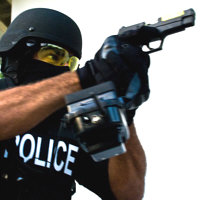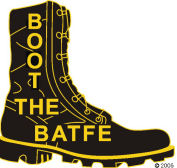

Acting in Imperfect Conditions...

By Tim Schmidt - USCCA Founder. August 2018 , Issue No. 31
Last week I brought you a tragic story out of California in which an errant bullet from a police officer's gun struck and killed an innocent Trader Joe's worker.
Melyda Corado was fatally struck when a round fired by an officer missed a suspect, identified as Gene Evin Atkins, and entered Corado's body after passing through her arm.
Since I touched a bit on the notion of police officers' differing level of responsibility when it comes to pursuing dangerous suspects, I thought it might be helpful to expand on something called the "Greater Danger Theory."
Kevin Michalowski, executive editor of Concealed Carry Magazine, explained that the Greater Danger Theory is something all police officers learn in training. The gist of it is this:
Will an officer's failure to act pose a greater danger to others than his actions at the time?
If we return to the situation in Los Angeles, the Greater Danger Theory might give us more insight into the officer's course of action. That officer had to weigh his decision to shoot (and all the potential risks shooting posed) against the potential danger of the alternative (not shooting). He determined (in seconds or less) that the risk of potentially hitting an innocent bystander outweighed the risk of the armed attacker entering a grocery store full of innocent bystanders. The death of Corado was an unfortunate and tragic byproduct of the police officer's attempt to keep a dangerous situation from becoming even more dangerous. (Consider how many people could have been hurt or killed inside the store if the officer had failed to act outside the store.)
Remember that the risk to law enforcement officers is also part of that equation. The police actively put themselves in danger every time they put on their uniforms. Concealed Carry Magazine Senior Editor Ed Combs, a former sheriff's deputy, is fond of saying that "there is no routine call in law enforcement."
A recent, sad example of this took place in Milwaukee just last week when Officer Michael Michalski was ambushed while searching for a suspect in a house.
According to the Journal Sentinel, "Jonathan Copeland Jr. is accused of shooting Michalski once in the head as the officer climbed a rear staircase."
Clearly, Michalski had a duty to pursue the suspect. But no doubt he also considered the potential consequences of what might happen if he didn't stop the threat. (According to the Journal Sentinel, Copeland had, just days earlier, "texted his wife ... warning that he would shoot police if they came after him. She had called police ... to report Copeland's threats to shoot up her house for not paying him for an unspecified expense.")
It's always tragic when there is a loss of innocent life. In Los Angeles and Milwaukee, respectively, Corado and Michalski paid the ultimate, unfair price because of the actions of dangerous and violent perpetrators. Luckily, both of these perpetrators were stopped, and now we must trust that they will be brought to justice.
So why am I telling you all this? Well, the Greater Danger Theory applies to police officers, but it also applies to everyday citizens who carry firearms for self-protection and the protection of those they love.
According to Kevin, "You may employ deadly force without effective target isolation when the danger presented by your failure to act would be greater than the danger of your actions."
He continues: "Notice that we say 'may' employ deadly force. As a private citizen, you are never required to use such force, and you will not be judged for not using it. The other side of the discussion is that the Greater Danger Theory is not a 'get out jail free card.' Your actions MUST be objectively reasonable under the circumstances. That means the Greater Danger Theory is only one element that will be considered when police and prosecutors evaluate your actions."
Clearly, there are no easy answers here.
I pray that you and I will never be forced into such a situation. As with all things self-defense-related, it pays to think about it before you decide to act (or not act) on it.
Take care and stay safe.
![]()
Tim Schmidt
Publisher - Concealed Carry Report
USCCA Founder
The factors involved with defensive shooting are many and need to be fully understood. Decision making when in a high stress situation is something with usually little or no luxury of time, and yet the need for making the right decision is absolutely paramount.
![]()
"You don't have to be Jewish to fight by our side."
You just have to love freedom.
![]()
© 2018 JPFO All rights reserved.
jpfo@jpfo.org
1-800-869-1884
Jews for the Preservation of Firearms Ownership
12500 NE 10th Pl.
Bellevue, WA 98005 USA
"America's most aggressive defender of civil rights"
We make the NRA look like moderates
![]()



































